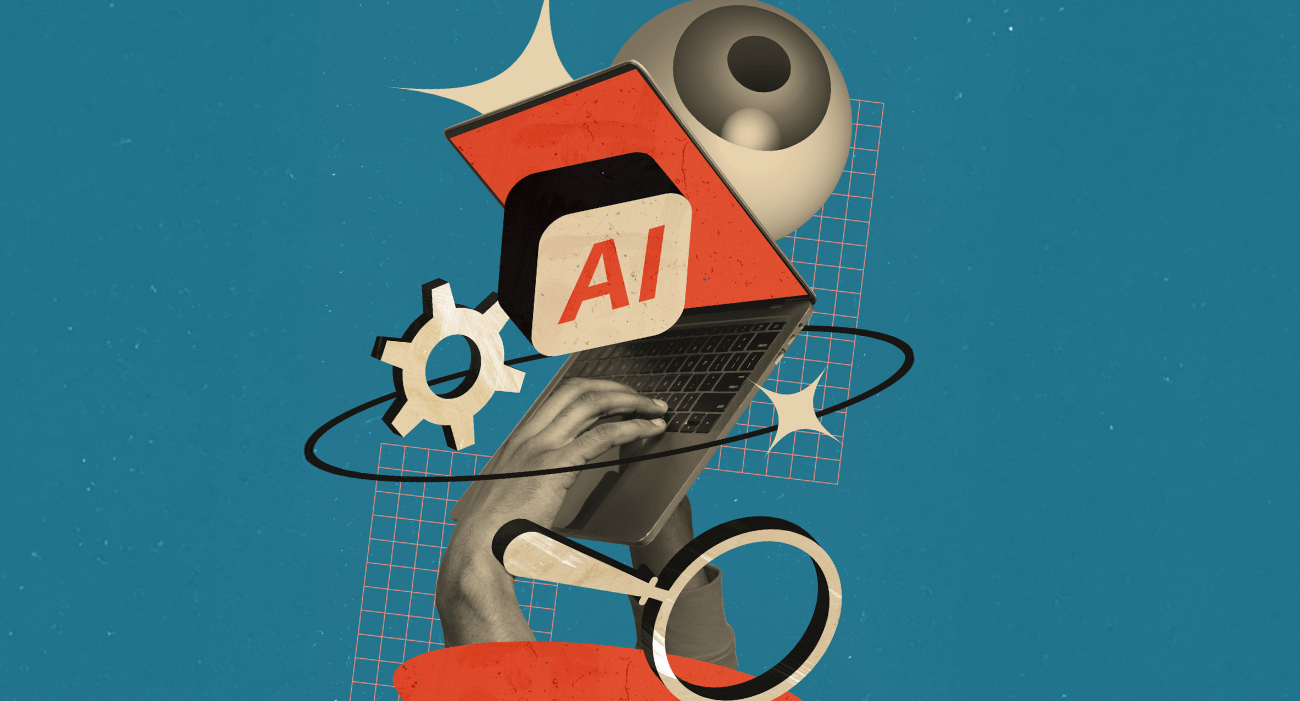
SEO + LLM = AEO
Content for the New Customer Conversation Journey
by Raffaella Pierpaoli, Head of Content and Social Intarget – Fabio Ardinghi, Head of SEO Intarget – Francesca Rosselli, SEO Manager Intarget
Today: how LLMs are impacting visits and purchases
LLMs (Large Language Models) are establishing themselves as a new access point to brands and e-commerce, evolving from simple chatbots to true discovery engines integrated into search (e.g., Google’s AI Overviews).
According to Adobe Analytics, between July 2024 and February 2025, referral traffic from generative AI sources to retail websites in the United States grew by +1,200%, peaking at +1,950% on Cyber Monday 2024.
Impressive numbers, but they hide an important reality: on a base of 100, traffic from AI remains below 1% of total referrals. Paid Search, by comparison, represents over 60% of retail traffic in 2025, Direct about 20%, and Email around 10%.
Yet, even if small in absolute terms, this channel shows very different qualitative behaviors. Adobe also highlights that visitors coming from AI sources:
- browse +12% more pages per visit,
- have a 23% lower bounce rate,
- show a growing inclination to purchase: conversions, which in July 2024 were –43% compared to other channels, by February 2025 had reduced to –9%, recovering 34 percentage points.
👉 In other words: users from AI are more engaged, more informed, and increasingly ready to convert.
2026: how the customer journey will change
If growth continues at the same pace, in 2026 LLMs will become a structural touchpoint in the customer journey.
1. The 2026 customer journey
- From search to conversation: The starting point will no longer be a keyword, but a conversation. Tools such as ChatGPT, Perplexity, and Gemini will increasingly become the starting point for discovery and evaluation activities. Not a list of links anymore, but summaries and direct recommendations (Valido.ai, 2025).
- From B2C to B2AI: as Kartik Hosanagar explains, we are entering a B2AI era in which consumers increasingly delegate their choices to personal AI agents, which will negotiate directly with the companies’ AI agents.
- SEO → AEO (AI Engine Optimization): Visibility will depend less on the ranking of a page and more on the probability that its content will be included in the AI Snapshot (the generated response). This requires optimization for datasets, knowledge graphs, and adherence to E-E-A-T principles (Experience, Expertise, Authoritativeness, Trustworthiness) used by LLMs to assess source quality.
2. What content to produce today to be found in 2026
- Accessibility for LLMs: Ensuring that crawlers can first technically access the site, removing scanning barriers (robots.txt) and rendering barriers (JavaScript), and then semantically understand its contents through advanced schema markup (for Products, FAQs, etc.), is the dual fundamental goal of any optimization strategy.
- Machine readability + synthesis: Models reward answer-first content: clear, information-dense, with conclusions expressed at the beginning.
- Distributed authority: manage not only the owned site but also channels such as Reddit, YouTube, and Substack, which feed the datasets.
- From funnel to conversation: it makes less sense to produce content “per stage” (awareness, consideration, conversion). The user journey is no longer linear, so it’s better to create modular, reusable, and conversational content, ready to be cited by LLMs.
3. The relative weight of text, images, and video in 2026
- Structured text: is key to being read and interpreted by LLMs. Without accessible, organized, and semantically structured text, models cannot quote or recommend the brand.
- Images and video: The role of images and videos is evolving in two directions: they no longer just persuade humans but have become crucial to informing AI. Thanks to computer vision, multimodal models can now “read” visual content, analyzing its context and details. Therefore, technical elements such as detailed metadata, descriptive alt text, and video transcripts are no longer optional but have become fundamental SEO assets for being discovered and recommended by AI.
👉 In 2026, therefore: text to be found by LLMs, images and videos to persuade and convert.
4. Practical advice for companies in 2025 (ahead of 2026)
- AI readiness audit: check crawler accessibility and verify that all key content is readable and accessible.
- AI visibility monitoring: implement Generative Engine Optimization tools to understand how and where the brand appears in AI responses.
- Conversational content hub: produce synthetic, Q&A, and comparative content properly tagged at the semantic level.
- Invest in distributed reputation: take care of mentions on communities and media that feed LLM datasets. Build brand authority not only on owned properties but also externally.
3-year scenario: 2028
Looking to 2028, a profound transformation of traffic sources and touchpoints is emerging.
- Decline of clicks in SERP: already today, over 60% of searches end without clicks due to Google’s AI Overviews. This percentage is expected to grow in the coming years.
- Stable social: Social media will remain a stable channel for entertainment and discovery: a space for storytelling, inspiration, and engagement that will continue to strengthen brand awareness.
- LLMs as shopping advisors: Language models will no longer be just research tools: they will evolve into true personal assistants, capable of guiding users from inspiration to final decision, often taking them directly to checkout. This phenomenon is already visible today with the arrival of Instant Checkout integrated into ChatGPT, which turns the conversation into an immediate point of sale.
- AI-to-AI commerce: within three years, it will be normal for customers’ AI agents to communicate with company AI agents to configure products, generate quotes, and complete transactions. This shift marks the beginning of true automated conversational commerce.
What does this mean for content?
- From SEO to “Conversational Optimization”: Content must be designed not only for human readers but also for how an LLM will interpret and return it to the end user at the moment of need.
- Single-touchpoint readiness: if pre-purchase channels focus on LLMs and social, content must be clear, concise, enriched with metadata, and easily quotable.
- Text + structured data: open datasets and APIs will become central to information distribution.
- Machine-readable multimodality: it is increasingly important that images and videos are accompanied by metadata, alt text, transcripts, and captions to be interpreted and recommended by multimodal LLMs.
- Storytelling for social, precision for LLMs: social media will remain the emotional showcase, while LLMs will be the rational advisor.
Conclusion
2026 will mark the consolidation of LLMs as a stable touchpoint in the customer journey. Companies that start today making their content AI-ready (accessible, structured, distributed) will be in an advantageous position when, within three years, LLMs guide most purchase decisions. The pre-purchase phase will increasingly concentrate on two dominant ecosystems: social media as an emotional and discovery stage, and conversational AI as the new personal advisor and checkout point. Other channels will continue to exist but will play a more ancillary role compared to these two.
Sources:
Adobe Analytics, March 2025
Adobe Analytics: Traffic to U.S. retail websites from Generative AI sources jumps 1,200 percent
Kartik Hosanagar
Hey AI, buy my product: How LLMs are rewriting the customer journey
Valido.ai, July 2025
“How AI is reshaping the ecommerce buyer journey”
TechRadar Pro, August 2025
“Future-proofing brands’ search strategies: harnessing LLMs for enhanced discoverability“





